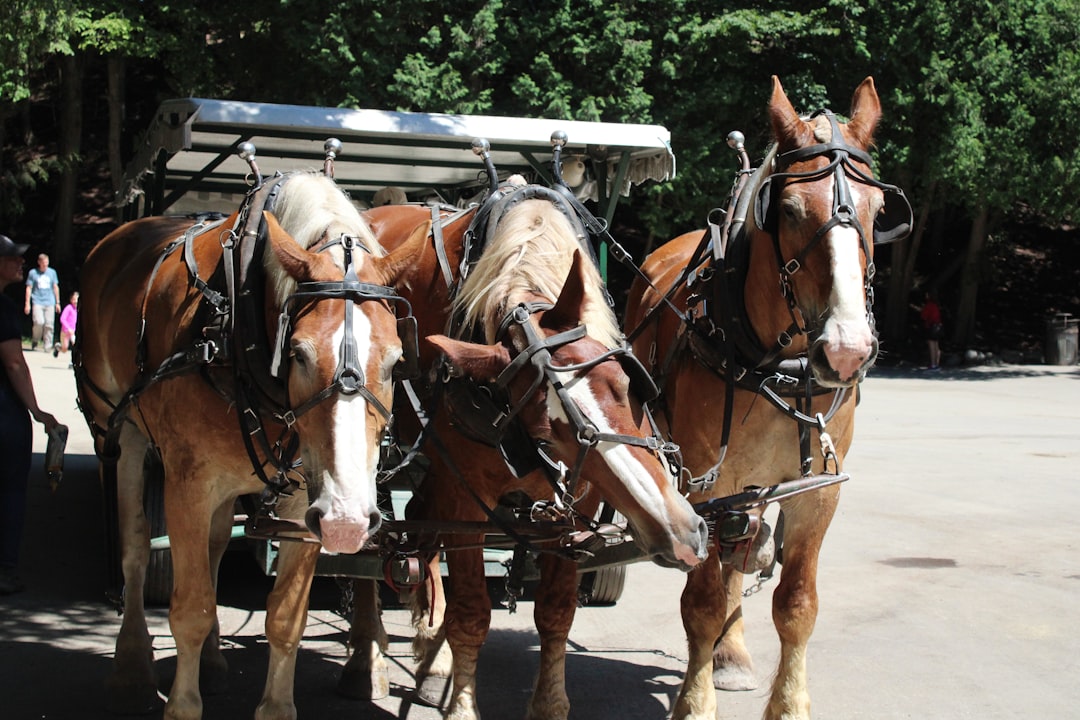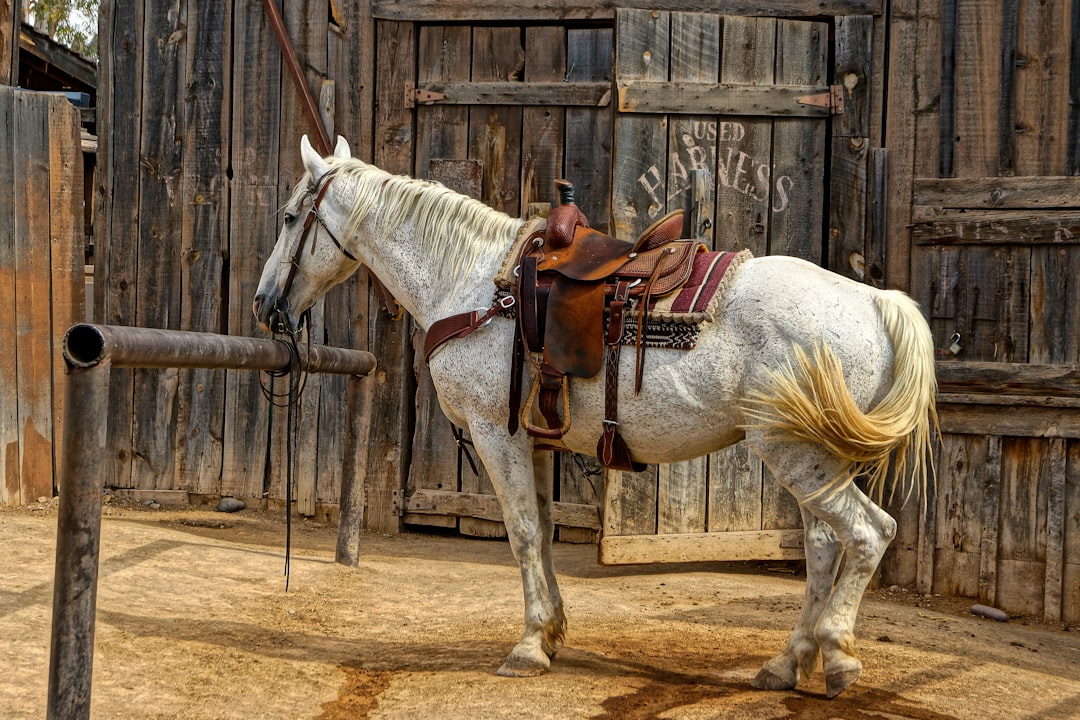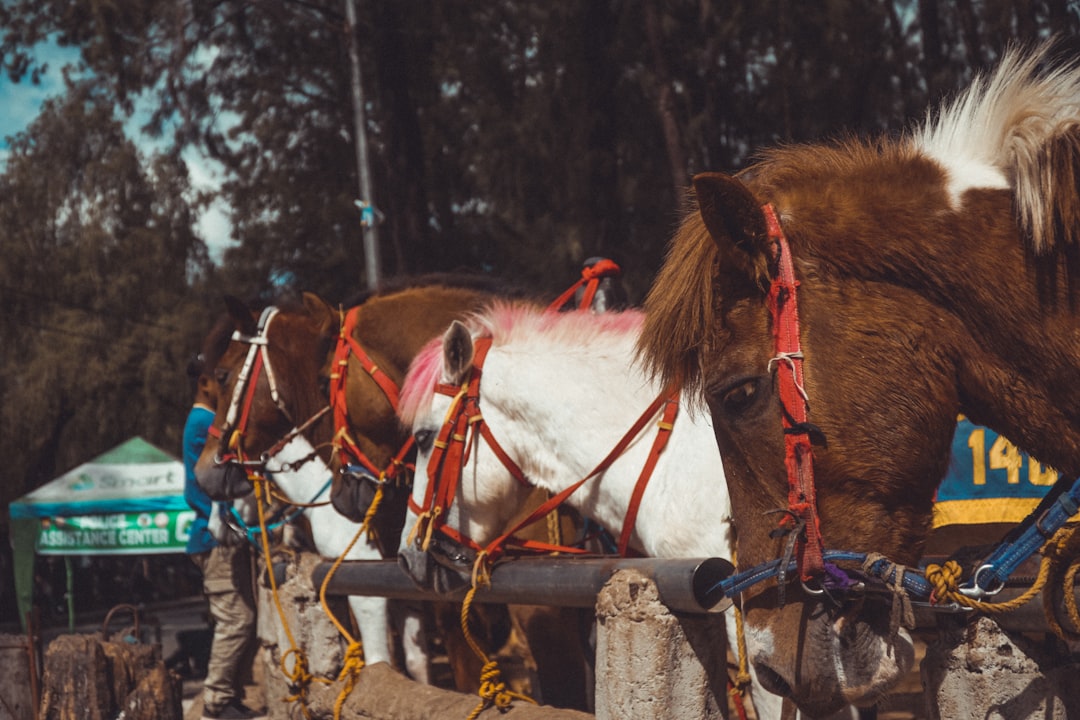

Engage prospects with a scan and streamline customer engagement with FREE QR code marketing tools by Sona – no strings attached!
Create a Free QR CodeFree consultation

No commitment

Engage prospects with a scan and streamline customer engagement with FREE QR code marketing tools by Sona – no strings attached!
Create a Free QR CodeFree consultation

No commitment
The horse transportation services sector faces unique operational and marketing challenges: ensuring the safety and comfort of equine passengers, navigating complex legal and insurance environments, and competing primarily on reputation in a fragmented market. Essential business processes, such as tracking high-value prospects, ensuring regulatory compliance, and horse transport tips, and communicating effectively with clients, are often scattered across offline touchpoints like brochures, handwritten requests, or in-person interactions. This fragmented approach can result in missed opportunities, as prospects who research your services may never be captured in your CRM, and engagement at the physical edge goes untracked.
Modern QR code solutions like Sona QR allow horse shipping companies to reimagine these legacy touchpoints. Trailer signage, printed contracts, event booths, and even transport crates become interactive gateways: with a simple scan, a potential customer can access a digital booking form, compare insurance options, or download up-to-date safety protocols. Advanced QR tools also track these touchpoints, giving providers early visibility into buyer intent and new opportunities for engagement before competitors can respond.
For equine service operators, QR-driven workflows offer a way to consolidate complex information at the precise moment it matters. By surfacing credentials, operational transparency, and real-time updates through digital channels, providers empower horse owners to make faster, more confident decisions. This guide explores how strategically placed QR codes can modernize the customer journey, prevent high-value prospects from slipping through the cracks, accelerate bookings, and help maintain the highest welfare standards.

Horse transportation services often struggle to capture the attention of prospects who encounter their brand at events, in stables, or during routine paperwork. These moments traditionally lack the means for immediate engagement or reliable lead tracking. Prospects may be interested, but without a frictionless method of recording their intent, many slip by untracked and unreachable.
The fastest path to improvement is to replace analog chokepoints with scannable, measurable entry points that are easy for clients and staff to use. QR codes bridge the gap between physical touchpoints and digital outcomes, so a single scan can initiate a quote, start a booking, launch a chat, or deliver compliance documents. With a platform like Sona QR, every scan can also create or enrich a lead in your CRM, which keeps the sales pipeline complete and timely.
Contracts and event marketing supplemented with QR-driven forms do more than simplify customer capture. Every interaction flows into a unified data layer, revealing which high-value inquiries progress to bookings and which require additional nurture to convert. See pipeline influence for context.

Horse transportation providers often rely on paper, contracts, or word of mouth to find new business. This approach presents a major challenge: it leaves a lack of visibility into the interests and journeys of prospects who remain anonymous until they reach out. Lost engagement often means lost revenue, as competitors with quicker digital triggers capture leads that would otherwise have been yours.
QR codes introduce speed, clarity, and measurable action to every print surface and in-person moment. A single scan can open a quote form, load a certifications page, or start a booking workflow without asking the client to search a website or type a URL. For mobile-first buyers who expect on-demand answers, the path to conversion is much shorter.

Horse transportation companies face logistical obstacles not only in moving horses, but in managing the diverse administrative and customer care touchpoints along the journey. Inconsistent contact details, missing documents, or untracked requests often slow down the process. QR formats address these pain points by matching each interaction to the right action.
For equine logistics, the most valuable formats are those that create instant access to forms, credentials, and contacts. Dynamic QR codes should be used for any destination that could change or needs to be measured over time. Static codes are better for evergreen resources that rarely change, such as a general safety guide.
With Sona QR, you can generate all of these formats, manage edits centrally, and assign UTM parameters for attribution. You can also toggle a code from static to dynamic if you later decide to track performance or change the destination.

Growth opportunities for horse transport providers often appear at the intersection of physical and digital. Event grounds, loading sites, and in-vehicle waiting periods are moments when decision-makers have time but lack a clear action path. Uncaptured interest at these points can lead to delayed engagement or lost opportunities.
By mapping your customer journey, you can identify where a scan would remove friction or capture intent in the moment. Design codes and calls to action that fit the context. For example, a barn door flyer might emphasize safety credentials and sample pricing, while a delivery receipt might focus on rebooking and referrals.

A key challenge in horse transport is that high-value clients can express interest across many offline paths: event booths, printed forms, business cards, and barn signage. Without a clear digital bridge, these signals remain invisible to marketing and sales, which leads to slow follow-up and open doors for competitors. QR codes centralize and standardize these signals.
The inability to segment buyers by true need or behavior is a major challenge for lead nurturing in horse transportation. Many high-intent prospects, such as those researching pricing, safety, or insurance, remain hidden in the noise, which leads to generic outreach and missed conversions. With QR solutions, every scan becomes a data point that reveals context, timing, and intent.
By assigning different codes to different journey stages and placements, you can separate window shoppers from ready-to-book buyers. This allows you to deliver the right message at the right time. For example, a scan on a safety guide may receive educational content and testimonials, while a scan on a quote form triggers a same-day follow-up from dispatch.
With this structure, you focus sales and marketing resources on the warmest leads while lowering acquisition costs. Sona QR’s tagging and integration features make the process consistent and scalable.
For most horse transport providers, print and digital marketing are siloed. Measuring outcomes across channels or moving leads between them has traditionally been difficult. This fragmentation hides the true drivers of bookings and leaves ROI uncertain. QR codes connect the dots by turning every channel into a measurable step in a single journey, especially across print and offline attribution.
When you place QR codes on assets that already perform, you eliminate unnecessary friction. Clients do not need to remember a URL or search for your brand. They scan, take action, and your systems log every step. This creates a seamless path from awareness to conversion and makes optimization straightforward.
Unified dashboards like those in Sona QR help you monitor and optimize these engagements quickly. You can double down on placements and messages that deliver the strongest conversion ROI.
Executing a QR program is simpler when you follow a consistent, repeatable plan. The steps below outline a practical path from idea to measurable impact, with examples tailored to horse transportation.
Start with a focused business goal and the physical environment where the action should happen. If events produce a lot of interest but few tracked leads, prioritize booth signage and handouts. If quotes stall during paperwork, focus on codes that streamline document upload and e-signing.
Identify one or two high-volume bottlenecks and design codes to solve them. For example, aim to increase quote requests at showgrounds by 25 percent or to cut document collection time in half for pre-transport checklists. With Sona QR, you can track scan volume, form completion, and time-to-book to validate progress.
Choose between static and dynamic QR codes based on whether you need flexibility and measurement. Static codes are fine for evergreen documents, while dynamic codes allow editing, A/B testing, and analytics without reprinting.
For campaigns, dynamic codes are usually the best option because they capture more data and support future optimization. You can also create device-aware destinations that send scanners to the right app store or landing page variation.
Effective QR codes combine visual clarity with strong messaging. Include your logo and brand colors, add a branded frame, and feature a short benefit-driven call to action. Keep surrounding whitespace to ensure reliable scanning and make the code large enough for the viewing distance.
Field-test before rollout. Check how the code scans in bright sun on a trailer, under indoor arena lighting, and from various angles. Test on multiple devices and operating systems to prevent avoidable failures after printing.
Start creating QR codes for free.
Roll out codes where your buyers already interact with your brand. Trailers and vehicles extend reach during travel days, while booth signage and barn flyers capture in-person interest. Contracts, invoices, and delivery receipts create measurable engagement during back-office phases.
Map each placement to the most likely action. A trailer code should emphasize quotes or credentials. A contract code should prioritize e-signing and documentation. A delivery receipt code should prompt reviews, referrals, or rebooking.
Treat each code as a mini-campaign. Monitor scans by placement, date, and device. Compare scan-to-form completion rates, and test alternative CTAs and landing pages. Use these insights to refine creative, reposition codes, and shift budget.
Integrate with your CRM so scans enrich contact records and trigger workflows like same-day follow-up from a dispatcher. With Sona QR, you can automate lead routing, set alerts for repeat scanners, and feed audiences into ad platforms for retargeting.
For years, horse transportation providers lacked clarity on which marketing touchpoints actually led to bookings or upsells, especially across print and offline channels. This uncertainty made it hard to justify spend, optimize campaigns, or prove effectiveness. QR analytics close the loop by connecting scans to business results.
When scans are tied to specific placements, creative, and audiences, you can see where to invest and where to pull back. You also gain better operational insight. For example, you may learn that barn signage drives more uploads of health documents than email reminders, which helps you prioritize field deployments.
Sona QR captures real-world signals and Sona.com turns those signals into actionable insights. Together, they help you move from scan-level metrics to pipeline and revenue outcomes.
Scaling QR success is about consistency, clarity, and data discipline. The more precisely you tag and test, the more quickly you will find high-performing combinations of placement, message, and offer. Small creative changes often produce measurable improvements in scan rate and conversion.
Equip staff to prompt scanning at key moments, such as during event consultations or at pickup and drop-off. When clients know what they get from a scan, they are far more likely to engage.
Seeing how others deploy QR codes can spark ideas for your own campaigns. The best executions pair a compelling offer with a contextually relevant code that makes the next step obvious. Analytics then inform which creative and placements should be scaled.
Sophisticated analytics platforms such as Sona QR and Sona.com guide messaging and resource allocation. As insights accumulate, your deployment and creative get sharper, which compounds performance.
Even simple QR tactics can deliver strong results when executed well. A few expert practices will help you avoid common mistakes and set a foundation for reliable growth. Always align the promise next to the code with the actual destination content, and prioritize mobile UX for every landing page and form.
It is equally important to manage trust and scam awareness. Prominently display safety and credential information, including DOT, USDA, and insurance coverage. Pairing reassurance with action is especially persuasive for equine owners making careful, high-stakes decisions.
Modern platforms support branded design, scan tracking, and attribution, which helps you avoid missteps and maximize every campaign’s reach and ROI.
As the horse transportation industry balances offline expertise with digital efficiency, QR codes have become essential for surfacing demand, tracking engagement, and converting prospects into bookings. By turning everyday assets like vehicles, paperwork, and event signage into actionable gateways, transport providers gain early insight into high-value leads and strengthen the connection between marketing investment and business outcomes.
Clients benefit from convenient, transparent service, while operations minimize missed opportunities and can confidently prove campaign ROI. For teams ready to modernize, unify attribution, and engage prospects the moment intent appears, QR codes offer a practical pathway to more bookings and deeper relationships throughout the equine logistics journey. With Sona QR and Sona.com, you can launch, measure, and optimize these programs quickly, then scale them with the confidence that every scan can be traced from first touch to revenue.
QR codes have transformed horse transportation services from simple logistics into dynamic, customer-centered experiences that drive trust and conversions. Whether it’s streamlining booking processes, providing instant access to shipment details, or enhancing communication throughout the transport journey, QR codes replace cumbersome paperwork with seamless, real-time interactions that build confidence and loyalty.
Imagine your clients scanning a code to instantly track their horse’s location, verify safety protocols, or access personalized care instructions—turning uncertainty into peace of mind. With Sona QR, you can create dynamic, trackable QR codes in seconds, update information instantly without reprinting, and connect every scan to actionable insights that improve service and boost repeat business. Start for free with Sona QR today and transform every scan into a trusted connection and a loyal customer.
The article does not list specific providers but emphasizes using modern digital tools like Sona QR to enhance horse transportation services by improving booking, safety, and communication.
The article does not provide specific pricing details but suggests QR codes can link to price calculators and quote forms for accurate and immediate cost information.
Safety measures include displaying DOT, USDA, and insurance credentials, driver training certifications, and providing up-to-date safety protocols accessible via QR codes.
Clients can scan QR codes on crates, stall cards, or delivery documents to access secure status pages with ETAs, rest stop logs, and welfare check confirmations for live transport updates.
Services include door-to-door transport, shared loads, insurance and documentation handling, live transport updates, compliance and credential verification, and post-journey engagement.
QR codes digitize offline touchpoints, enable instant access to booking forms, insurance options, and safety info, track engagement, and connect marketing with sales and operational workflows.
QR codes are placed on trailers, event banners, barn signage, contracts, invoices, delivery receipts, facility signage, and trade show booths to maximize visibility and engagement.
Common QR code formats include dynamic web links for booking and info, vCards for contact sharing, form-embedded codes for quotes and document uploads, app downloads, and PDF/document downloads.
Using QR analytics, providers can monitor scans by placement, device, and time, measure conversion rates, link scans to CRM data, and adjust messaging and budgets to improve ROI.
Avoid poor placement, low contrast, reflective surfaces, unclear calls to action, and assuming all users trust or know how to use QR codes; always test codes and provide clear instructions.
By assigning unique QR codes to different buyer journey stages and contexts, tracking scan data, and syncing segments to CRM and ad platforms, companies can personalize follow-up and retarget effectively.
QR codes provide instant access to up-to-date insurance documents, health certificates, Coggins tests, and compliance checklists, reducing paperwork delays and ensuring accurate documentation.
Use Sona QR's trackable codes to improve customer acquisition and engagement today.
Create Your FREE Trackable QR Code in SecondsJoin results-focused teams combining Sona Platform automation with advanced Google Ads strategies to scale lead generation

Connect your existing CRM

Free Account Enrichment

No setup fees
No commitment required

Free consultation

Get a custom Google Ads roadmap for your business






Launch campaigns that generate qualified leads in 30 days or less.
